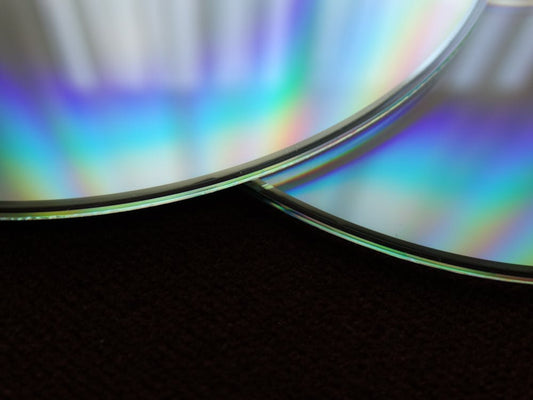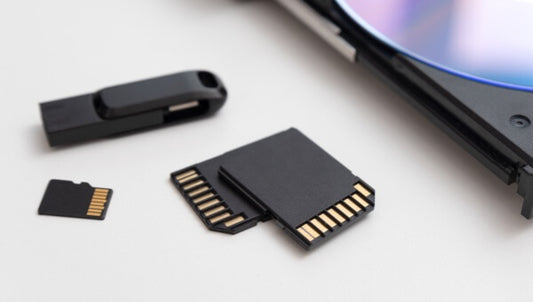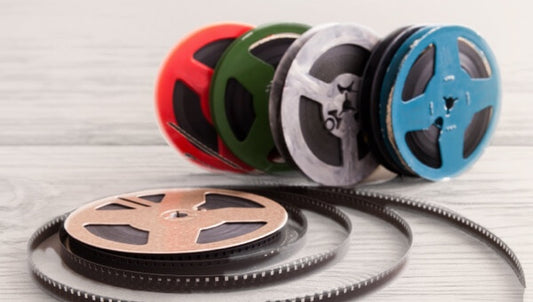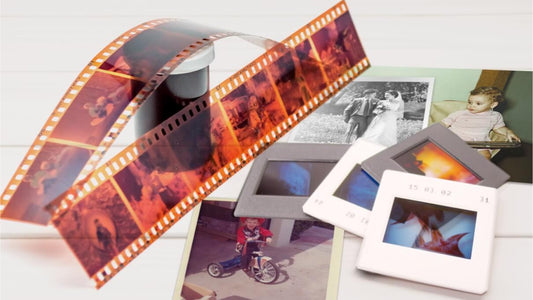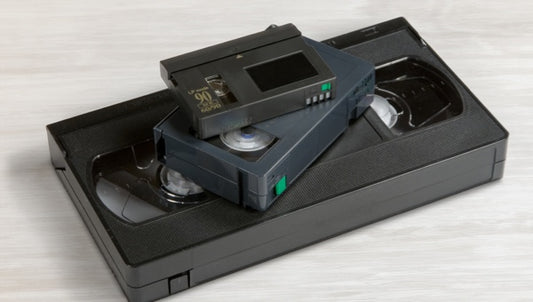Before streaming, DVDs, or even VHS, the idea of recording your favorite TV shows at home was unheard of. If you missed a broadcast, that was it—you had to wait for a rerun, if one ever came. But in the mid-20th century, innovators were already experimenting with ways to bring video recording beyond professional studios and into people’s homes. Many think of Betamax, introduced in 1975, as one of the earliest home video formats. But the road to home recording was paved with bulky machines, reel-to-reel tapes, and experimental systems that never quite took off. From massive industrial videotape systems to the first attempts at cassette-based video, there was a fascinating evolution before Betamax ever made its debut. So, what came before Betamax? Let’s rewind with Capture and take a look at the early formats that shaped the future of home video.
Jump to:
The Era Before Home Video Recording
Before video recording became a household convenience, watching movies or TV shows was a fleeting experience. You either caught a live broadcast, went to the theater, or relied on network reruns. There was no way to pause, rewind, or save a show for later—once it aired, it was gone.
Behind the scenes, however, television networks and film studios had access to powerful recording technology. By the 1950s, broadcasters used large and complex videotape machines to record shows for later playback. These systems were far from consumer-friendly—they required massive reels of tape, specialized operators, and a hefty budget.
While the average person couldn’t record their favorite programs just yet, the groundwork was being laid for something revolutionary. The early days of videotape recording saw the birth of formats that would eventually shrink in size, drop in price, and make their way into homes. But first, everything started with a game-changing invention: the Ampex Quadruplex system.

What Was Before Betamax? Early Videotape Recording (1950s – 1960s)
Before home video recording became a reality, the first major breakthrough in videotape technology arrived in 1956 with the Ampex Quadruplex system. This was the first practical videotape recorder (VTR), revolutionizing television production by allowing networks to pre-record shows instead of relying solely on live broadcasts. However, there was a catch—it was massive, expensive, and required professional operators. The idea of personal video recording was still a distant dream.
Ampex Quadruplex (1956)
The Ampex VRX-1000, later known as Quadruplex, used 2-inch-wide magnetic tape reels and a unique four-head recording system. It produced high-quality images but was anything but user-friendly. These machines cost tens of thousands of dollars and were only found in professional environments like TV stations and major film studios.
The Rise of Open-Reel Video (1960s – Early 1970s)
As technology advanced, video recording systems began to shrink—at least slightly. The 1960s saw the rise of open-reel video formats, which, while still bulky, were the first steps toward bringing video recording outside professional studios.
- Sony CV Series (1965-1969): One of the first consumer-accessible video recording systems. It used open reels of ½-inch videotape but required manual threading and was far from convenient.
- EIAJ-1 (1969): A standardized format adopted by multiple manufacturers. This made video recording more accessible for educational and industrial use, but it still wasn’t practical for the average household.
- Other experimental systems: Various companies attempted to develop smaller and more affordable home recording systems, but the technology wasn’t quite there yet.

The Transition to Cassette-Based Video (Early 1970s)
The end of the 1960s marked a shift—video recording was no longer limited to big-budget studios, but it still wasn’t something you’d find in most homes. Things were about to change as engineers began shifting their focus toward cassette-based video formats—a crucial step toward the creation of Betamax.
Philips VCR (1972) – The First Consumer Video Cassette
In 1972, Philips introduced the VCR (Video Cassette Recording) format, the first attempt at a home-friendly video recording system. Unlike previous open-reel models, Philips’ VCR used a compact cassette similar in design to an audio cassette.
- It allowed users to record TV programs at home, a revolutionary concept at the time.
- The tape length was limited, providing only about 30 to 60 minutes of recording time—a major drawback compared to later formats.
- It was expensive and saw limited adoption, making it more of a stepping stone than a game-changer.
Despite its limitations, the Philips VCR system proved that home video recording was possible. However, a more practical solution was still needed to truly bring recording into mainstream households.
U-matic (1971) – The Bridge Between Professional and Consumer Video
Sony’s U-matic format, introduced in 1971, was another crucial step toward Betamax and VHS. It was the first commercially available videocassette format and was originally intended for home use.
- The tapes were large (¾-inch) and built for durability.
- It was popular among businesses, schools, and TV stations but was too costly for mass home adoption.
- While it wasn’t the breakthrough Sony had hoped for in the consumer market, U-matic set the stage for the cassette-based home video revolution.
Today, as these older tapes degrade, many people choose to convert old home movies to digital, ensuring their memories last for generations.
The Path to Betamax
By the mid-1970s, the idea of home video recording was no longer science fiction. The shift from open-reel to cassette-based formats was making video recording smaller, simpler, and more accessible. But there was still a need for a compact, high-quality format that could truly compete in the home market. That moment arrived in 1975, when Sony introduced Betamax—the first widely available home video recording system.
But as history would soon show, Betamax wasn’t the only player in town. Another format was on the horizon, setting the stage for one of the biggest format wars in consumer tech history.

The Stage Is Set for a Format War
Betamax may have been first, but it wouldn’t go unchallenged. In 1976, just a year after Betamax’s debut, JVC introduced VHS (Video Home System)—a rival format that would spark one of the biggest battles in consumer technology.
What followed was a fierce competition that would define the home video industry for years. But to truly understand the significance of the Betamax vs. VHS war, it’s important to remember the journey that led there—a journey filled with groundbreaking innovations, experimental formats, and the relentless pursuit of bringing video recording into the hands of everyday people.
Betamax Wasn’t the Beginning, But It Changed Everything
Now that you know what was before Betamax, it’s clear that home video recording didn’t happen overnight. Early formats like Ampex Quadruplex and U-matic paved the way, but they were too bulky and expensive for everyday use. Betamax was the first truly compact, high-quality, and user-friendly format, setting the stage for home recording. But then VHS arrived, sparking a legendary format war that reshaped home entertainment.
Though Betamax lost, its influence remains. It brought video recording into homes and paved the way for modern media. Today, many people look for ways to transfer Betamax to digital, preserving their old recordings in a format that won’t degrade over time. Next time you stream a movie, remember—it all started with those first flickering images on magnetic tape.


